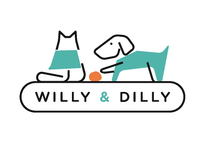How to Clean Your Dog's Teeth
It's important to keep your dog's teeth clean, as neglecting to do so can lead to plaque buildup and dental disease. Dental disease is very common in dogs, second only to ear infections, and it can be very painful - similar to what we might go through. Check and clean the dog's teeth as part of their hygiene treatment to prevent costly treatment costs.
Cleaning dogs teeth
Before you begin brushing your dog's teeth, it's always a good idea to have your veterinarian demonstrate the proper technique. The positioning of the jaws and how the teeth meet differs between breeds. Brachycephalic breeds, such as Pugs and Chihuahuas, have misaligned jaws with crowded or missing teeth, making them more susceptible to dental disease.
Start brushing their teeth when they're a puppy and do so every day to get them used to it. If you haven't already done so, begin by placing your finger near their mouth and gradually introduce the action. Maintain the routine and gradually add brushing until it becomes second nature.
Since human toothpaste isn't appropriate for dogs, you'll need to purchase a dog toothpaste. Brushing their teeth requires a special dog toothbrush that fits over your finger, but if you don't have one, a child-sized toothbrush will suffice. Therefore, you should clean their teeth on a daily basis as part of their hygiene routine.
How to brush your dog's teeth
- Apply a small amount of toothpaste to your dog's food. This will assist them in becoming accustomed to the flavour.
- Put a small amount on your finger for a few days and urge your dog to lick it off.
- When you're ready, run your finger over your dog's teeth and gums without toothpaste to familiarise him with the brushing motion. The toothpaste can then be applied to the teeth with your finger. Avoid doing whatever you're doing if your dog seems to be in pain. Repeat this process over a few sessions until your dog is comfortable with the taste and feeling.
- You should now try brushing your teeth with a toothbrush. You don't have to completely open your mouth to do this; simply raise the upper or lower lip to gain access to the teeth. Brush all of your teeth in a circular motion, paying special attention to the gum line. You shouldn’t apply the toothpaste until your dog has become used to the feeling of the brush. Brushing your teeth should be done every 24-48 hours at the very least.
Maintaining healthy teeth
Since every dog is different, there is no such thing as a universal diet for all dogs. If you're not sure what diet is best for your dog, consult a veterinarian or a reliable pet store for more details.
Some dog owners prefer wet foods over dry foods for their pets. Dry dog food, on the other hand, can have the added advantage of exercising their chewing muscles and mildly brushing their teeth. Dental chews and treat toys like the Willy & Dilly solid ball are effective ways to keep your dog's teeth clean.
Feeding bones to your dog
Bone feeding is a contentious subject. Raw, meaty bones are a tasty treat for your dog, and they do help clean teeth, but they can be dangerous. Bones can cause dental fractures in some dogs that eat 'energetically,' and constipation in others. Cooked bones are more likely to break apart, causing internal damage. Before feeding your dog bones, seek advice from your veterinarian, and keep an eye on them if and when they do consume them.
Related Blogs:
